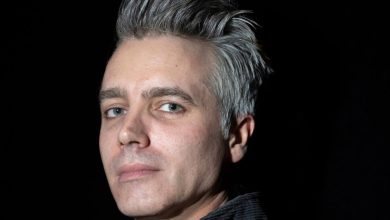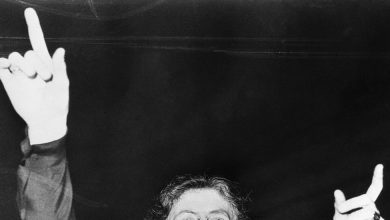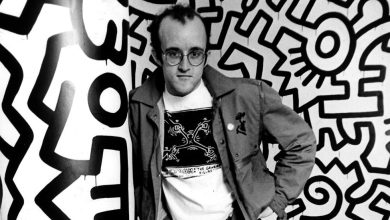‘No Time to Die’ Review: His Word Is His Bond

“No Time to Die.” It’s kind of an ambiguous title. No time because we’re too busy or because now is not the right moment? The makers of the latest James Bond film have generously supplied us with 163 minutes — including a slow-moving Billie Eilish theme song — during which we can ponder this and other urgent questions. That’s in addition to the nearly 18 months of pandemic delay that we have waited for this episode (the 25th overall and Daniel Craig’s last in the role of the least secret member of Her Majesty’s Secret Service).
It arrives with a curious mixture of heaviness and insouciance. Mortality looms over the quips and car chases — not only the expected slaughter of anonymous minions, but an inky cloud of grief, loss and weariness. Near the beginning, in the midst of a high-toned Mediterranean holiday, Bond visits the grave of Vesper Lynd, the lover who died in “Casino Royale” in 2006. “I miss you,” he says, and “No Time to Die” is uncommonly preoccupied with memory and leave-taking. Tiptoeing around the spoilers, I will say that it amounts to a series of long goodbyes.
As someone who grew up in the Roger Moore era, when defiance of every kind of gravity was the hallmark of the series, I have trouble adjusting my eyes to the darkness and the possibility of tears. I don’t entirely trust the emotions that the director (Cary Joji Fukunaga) and the screenwriting committee (Fukunaga, Neal Purvis, Robert Wade and Phoebe Waller-Bridge) put into play, or the weighty themes they reach for.
As the knots in the plot are straightened out, the intricacies of spycraft recede in favor of a ponderous, familiar drama of sacrifice and revenge. The gloomy alpha villain (an ultra-gothy Rami Malek), who wants to wipe out much of humanity and is a mixture of curdled idealism and unhealed trauma, may remind you of Thanos in the final “Avengers” movies. And the overall vibe — a look that is both opulent and generic; a tone that mixes brisk professionalism with maundering self-pity; an aggressive, exhausting fusion of grandiosity and fun — is more superhero saga than espionage caper.
Still, you can’t quite hate the player, even if you suspect he may be in the wrong kind of game. Bond, now officially retired from MI6, refers to himself tongue-in-cheekily as “an old wreck,” and unlike some of his predecessors, Craig makes no attempt to seem more youthful than he is. (Craig is 53. The character, conceived by Ian Fleming as a man who had seen action in World War II, must be somewhere around 100 by now.) Which is not to say that Craig’s magnetism has dimmed or that his gym membership has lapsed.
An ideal man of the 21st century, his Bond has always had the hardest body and the softest heart. Casting aside the suave, playboy misogyny of the earlier incarnations, he grieves and pines and says “I love you” in several languages.
In French, for example, to Léa Seydoux. She plays Madeleine Swann, a possible femme fatale whose back story links her with the main bad guy, Malek’s Lyutsifer. He takes a while to emerge, which gives the movie time to unravel an intricate skein of double-crosses and also to check in on some old friends and enemies. The specter of SPECTRE resurfaces, as does its erstwhile mastermind, Ernst Stavro Blofeld (Christoph Waltz), and Bond’s salty old C.I.A. pal, Felix Leiter (Jeffrey Wright).
As the saying goes, the enemy of my enemy’s enemy is my girlfriend. Or something like that. By the time that Billie Eilish song is over, James has split from Madeleine and settled into a quiet compound on a Caribbean island. But then a biological weapon is snatched from a London laboratory, and we are off and running, with a new set of cars and watches and smartly tailored suits.
And a crackerjack team that mixes new and familiar faces. M is Ralph Fiennes. Q is Ben Whishaw. Moneypenny is Naomie Harris. The British Empire is a distant memory, Judi Dench is much missed and contemporary geopolitics are a faint rumor. There is a new 007, however: Nomi (Lashana Lynch), who has been given Bond’s old ID number and who has a similar skill set, including the ability to rattle off one-liners in the middle of a gunfight. Her presence seems at once to gesture in the direction of recurrent arguments about Bond casting — does the character have to be male? must he always be white? — and to wave them away. A Nomi franchise could be interesting, but I won’t hold my breath.
The future of James Bond, in any case, is a topic for another day. While we’re on the subject of time, I’ll say that if “No Time to Die” were 90 minutes long, it might be worth yours. Fukunaga has a crisp, stylish way with action, and some of the set pieces have the flair and inventiveness of musical numbers, most notably a party in Havana where Ana de Armas shows up to play Cyd Charisse to Craig’s Gene Kelly. That sequence feels like a throwback and an update, reprising the Bond tradition of elegance, charm and high silliness.
Oh well. There are still hours of Lyutsiferian nonsense to endure. The final showdown, an interminable search-and-rescue mission on an island compound off the coast of Japan, supposes that what the fans want more than anything else is weepy, wheezy cliché-mongering. The villain explains himself at great length, and proposes that he and the hero are mirror images of each other. We’ve never heard that one before. “We are two heroes in a tragedy of our own making,” he whines. But it isn’t a tragedy. It’s a mistake.
No Time to Die
Rated PG-13. Running time: 2 hours 43 minutes. Opening Sept. 30 in select theaters around the world. Opening Oct. 8 in the United States.



